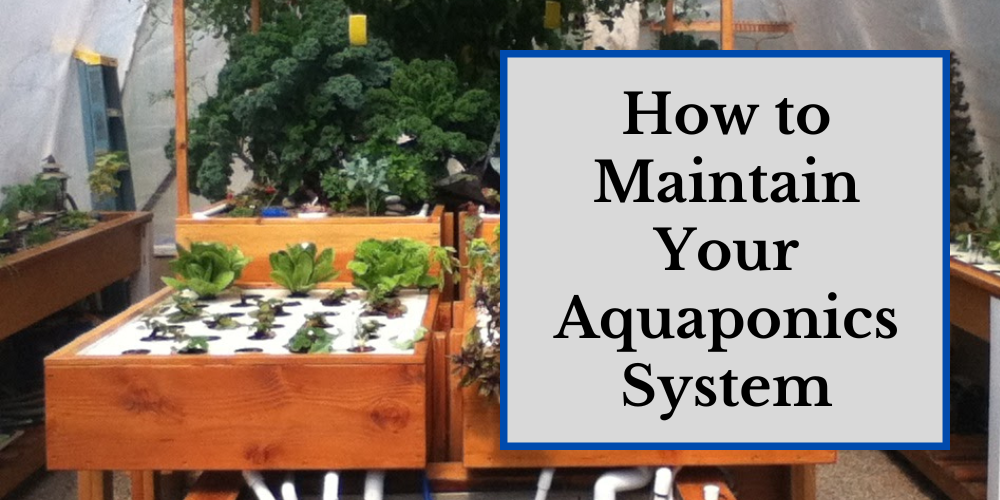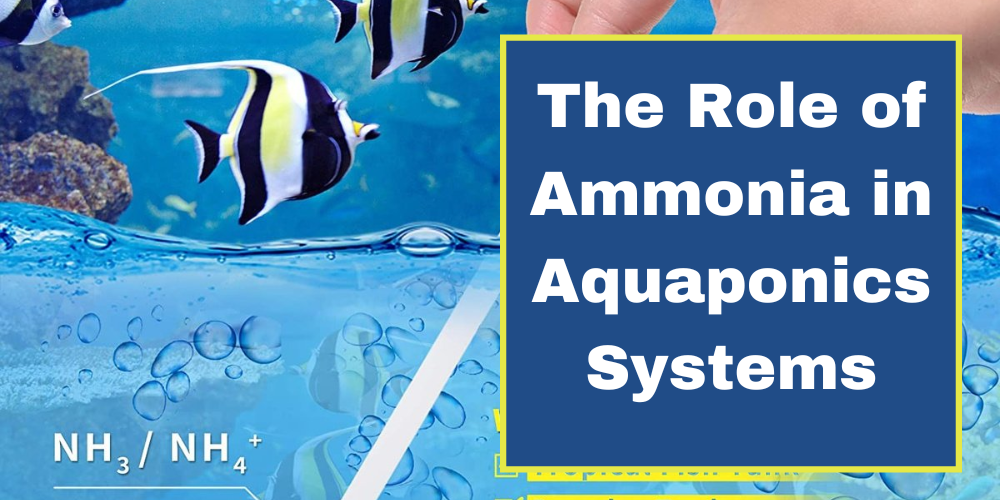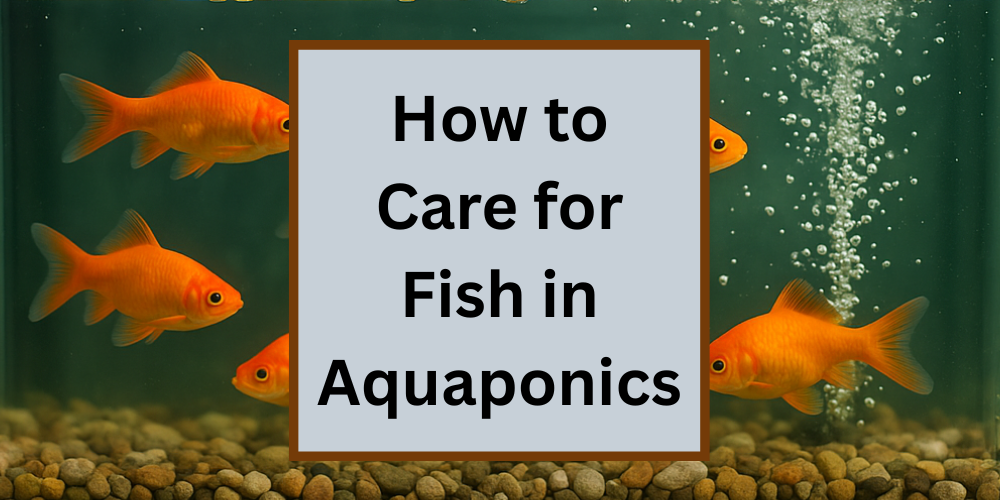If you’re starting your aquaponics journey, one of the first questions you’ll face is: “What kind of water should I use?” It may seem simple, but the water you choose and how you manage it, can make or break your system. That’s because water is not just a filler; it’s the lifeline for your fish, your plants, and the beneficial bacteria that tie everything together.
Get the water wrong, and you risk stressed fish, stunted plant growth, and system crashes. Get it right, and you create the conditions for a thriving, self-sustaining ecosystem.
In this blog, we will cover everything beginners need to know about water in aquaponics, from selecting the right source to testing and treating it, to solving common problems and maintaining a balanced system over time. By the end, you’ll understand the basics of water management and feel confident taking the first steps in maintaining healthy conditions for your system.
 This article gives you the essential knowledge, but if you want to see real-life demonstrations of water testing, parameter adjustments, and troubleshooting, this 5-hour premium aquaponics video course takes you deeper, helping you master water management with step-by-step guidance.
This article gives you the essential knowledge, but if you want to see real-life demonstrations of water testing, parameter adjustments, and troubleshooting, this 5-hour premium aquaponics video course takes you deeper, helping you master water management with step-by-step guidance.
Why the Right Water Source Matters in Aquaponics
Water in aquaponics is not just “water.” It’s the environment your fish breathe in, the medium that carries nutrients to your plants, and the home for the beneficial bacteria that keep your system balanced. In other words, the quality and source of your water directly affect the success of your entire setup.
The three vital roles of water in aquaponics:
- Fish health: Poor water quality stresses fish, making them vulnerable to disease.
- Plant nutrition:Water is the delivery system that brings dissolved nutrients to your crops.
- Bacterial stability: Beneficial bacteria only thrive when conditions like pH, oxygen, and temperature are within range.
For new growers, it’s common to assume “I’ll just use tap water, it’s good enough.” But untreated tap water often contains chlorine or chloramine, which can be toxic to fish and bacteria. On the other hand, options like rainwater or well water each bring their own benefits and challenges. Choosing wisely and knowing how to prepare that source, sets the stage for a stable, productive system.
Common Water Sources in Aquaponics
|
Water Source |
Pros |
Cons / Risks |
Best For |
|
Tap Water |
Easily available, consistent supply. |
Often contains chlorine/chloramine (toxic to fish & bacteria), may need conditioning. |
Beginners (with proper dechlorination). |
| Rainwater |
Free, soft water (low mineral content), eco-friendly. |
Can be acidic, may carry pollutants (roof runoff, air contaminants). |
Sustainable growers with clean collection setups. |
|
Well Water |
Consistent supply, often rich in minerals. |
Risk of high hardness, iron, sulfur, or contaminants (requires testing). |
Rural systems with access to clean wells. |
|
RO/Distilled |
Pure water, no chlorine/chloramine, controlled baseline for adjustments. |
Expensive, lacks minerals (must remineralize), not eco-friendly if overused. |
Advanced growers seeking full control. |
Key Takeaways for Beginners
- Tap water is usually the simplest choice if you treat it correctly.
- Rainwater can work well but should be collected safely (not from polluted roofs or gutters).
- Well water needs testing before use, don’t assume “natural” means “safe.”
- RO or distilled water is great for precision growers but requires extra steps to add minerals back.
Key Water Parameters to Monitor in Aquaponics
The real success of your aquaponics system depends on maintaining key water parameters that keep fish, plants, and bacteria thriving together. Think of these parameters as your system’s “vital signs.” Monitoring them regularly helps you spot problems before they escalate.
The Essential Parameters to Track
1. pH (Acidity/Alkalinity)
- Ideal Range:6.8 – 7.2
- Why it matters:pH affects nutrient availability for plants and the survival of fish and bacteria. Too high or too low, and the balance collapses.
2. Temperature
- Ideal Range: Depends on your fish species (e.g., tilapia prefer 75–85°F / 24–29°C).
- Why it matters: Both fish metabolism and plant growth slow down outside their comfort zones.
3. Dissolved Oxygen (DO)
- Ideal Level:5–8 mg/L
- Why it matters: Fish need oxygen to breathe, and bacteria rely on it for converting waste into nutrients. Low DO can be deadly.
4. Ammonia, Nitrites, and Nitrates
- Ammonia and nitrites should be near 0 ppm, while nitrates provide plant food.
- Why it matters:High ammonia or nitrites can result to stressed or dying fish. Balanced nitrates results in healthy plant growth.
5. Water Hardness and Alkalinity
- Why it matters:These determine your system’s buffering capacity, helping stabilize pH against sudden swings.

How to Treat and Condition Your Water Before Use
Even the cleanest-looking water can hide elements that are harmful to your aquaponics system. That’s why conditioning your water is a must before adding it to your fish tanks or grow beds. The goal is to make water safe for fish, hospitable for bacteria, and nutrient-ready for plants.
Step 1: Remove Chlorine and Chloramine
- Why it matters:Most municipal tap water contains chlorine or chloramine, both toxic to fish and bacteria.
- How to fix it:
- Let water sit in an open container for 24–48 hours (works for chlorine, not chloramine).
- Use an aquarium dechlorinator or water conditioner (neutralizes both).
- Activated carbon filters can also strip out chlorine/chloramine.
Step 2: Balance Minerals
- Why it matters: RO or distilled water lacks essential minerals, while well water might have too much. Either extreme throws your system off balance.
- How to fix it:
- Add calcium carbonate, potassium bicarbonate, or magnesium sulfate (Epsom salt) as needed.
- Test hardness (GH) and alkalinity (KH) to guide adjustments.
Step 3: Match Temperature
- Why it matters:Sudden temperature changes shock fish and bacteria.
- How to fix it:
Allow new water to reach system temperature before adding. - In colder climates, pre-warm water slightly before topping up.
Step 4: Test Before You Trust
Always test conditioned water for pH, chlorine/chloramine, and hardness before introducing it into your aquaponics system. Prevention is far easier and cheaper than reviving a crashed system.
Common Water Problems in Aquaponics and How to Solve Them
Even with the right source and good preparation, water problems will eventually appear in every aquaponics system. The key is knowing how to spot them early and fix them before they cause lasting damage.
1. pH Swings (Too High or Too Low)
- Symptoms:Stunted plant growth, fish stress, or sudden bacteria die-off.
- Causes:Over time, bacteria naturally drive pH down; adding untreated well water may push it too high.
- Solutions:
- Raise pH with calcium carbonate or potassium bicarbonate.
- Lower pH gradually with phosphoric acid (only in advanced systems).
- Monitor pH weekly to prevent sudden swings.
2. Algae Blooms
- Symptoms:Green water, clogged pumps, low oxygen at night.
- Causes:Excess light exposure and nutrient-rich water.
- Solutions:
- Shade tanks and grow beds.
- Reduce feeding amounts.
- Add aeration to increase oxygen.
3. Low Dissolved Oxygen
- Symptoms:Fish gasping at the surface, sluggish behavior, plant yellowing.
- Causes: Overcrowded fish tanks, poor aeration, or hot weather.
- Solutions:
- Add an air pump or increase water movement.
- Reduce fish stocking density.
- Lower water temperature if possible.
4. Ammonia or Nitrite Spikes
- Symptoms:Fish stress, cloudy water, sudden fish deaths.
- Causes: Overfeeding, new systems still cycling, or filtration not keeping up.
- Solutions:
- Stop feeding temporarily.
- Increase aeration.
- Check biofilter function and avoid cleaning it too aggressively.
5. Hard Water or Mineral Imbalances
- Symptoms:White scale buildup, unstable pH, poor nutrient absorption by plants.
- Causes: High calcium or magnesium in well water.
- Solutions:
- Use rainwater or RO water to dilute.
- Add minerals back strategically to balance.

Best Practices for Long-Term Water Management in Aquaponics
Solving water problems is important, but the real secret to success in aquaponics is preventing issues before they start. By following a consistent water management routine, you’ll keep your fish healthy, your plants thriving, and your system running smoothly for years to come.
1. Create a Regular Testing Schedule
- Test pH, ammonia, nitrites, and nitrates at least once a week.
- Check temperature and dissolved oxygen daily in warmer months.
- Record results in a logbook or spreadsheet to track trends over time.
2. Top Up with Care
- Always dechlorinate tap water before adding it.
- Match temperature between system water and top-up water.
- Add water slowly to avoid shocking fish and bacteria.
3. Balance Feeding and Stocking
- Overfeeding is the fastest way to crash water quality. Feed only what fish consume in 5 minutes.
- Keep stocking density within safe limits,don’t overcrowd your tanks.
4. Maintain Aeration and Circulation
- Ensure pumps and aerators are working 24/7.
- Clean pump filters regularly to maintain strong water flow.
- Consider backup aeration in case of power outages.
5. Practice Preventive Maintenance
- Flush solids from grow beds or filters as needed.
- Inspect pipes and fittings for blockages or leaks.
- Keep tanks shaded to prevent algae growth.
Tools and Resources for Effective Water Management
Having the right tools on hand makes water management in aquaponics simple and stress-free. Beginners often underestimate how much easier it is to keep a system healthy when you can measure, adjust, and track water quality accurately.
Essential Tools for Monitoring
1. Water Test Kits
- Affordable starter kits test pH, ammonia, nitrite, and nitrate.
- Digital pH meters give more precise readings than strips.
2. Dissolved Oxygen (DO) Meters
- Optional for beginners, but essential for larger systems.
- Ensures oxygen stays in the safe range (5–8 mg/L).
3. Thermometers
- Simple but vital, stick-on or digital probes help monitor fish-friendly temperatures.
Tools for Conditioning Water
1. Dechlorinators (liquid water conditioners)
- Neutralize chlorine and chloramine from tap water.
2. Mineral Supplements
- Calcium carbonate, potassium bicarbonate, and Epsom salt help adjust hardness and alkalinity.
3. Activated Carbon Filters
-
A natural way to strip chlorine and improve water quality.
Tools and Techniques for Water Management
Managing water in an aquaponics system requires the right tools and techniques to ensure a balanced and healthy environment for fish, plants, and beneficial bacteria. Below are the recommended tools, filtration systems, and maintenance practices to optimize water quality and system performance.
A. Recommended Tools for Water Testing
Monitoring water quality is vital for maintaining a thriving aquaponics system. Regular testing helps detect imbalances before they become critical.
1. pH Meters and Test Kits:
pH affects nutrient availability for plants, fish health, and bacterial activity.
Recommended Tools:
- Digital pH Meters: Provide precise, real-time readings.
- pH Test Strips or Drops: Cost-effective options for quick checks, though less accurate.
Hanna Waterproof Pocket pH Tester
API pH Test Strips
2.Ammonia, Nitrite, and Nitrate Test Kits:
These levels indicate the efficiency of the nitrogen cycle and the health of fish and plants.
- Recommended Tools:API Freshwater Master Test Kit or equivalent comprehensive kits.
- Tips:Test weekly or more frequently during system startup or when introducing new fish.
API Freshwater Master Test Kit
3. Dissolved Oxygen (DO) Meters:
DO is critical for fish respiration and bacterial activity.
- Recommended Tools:Digital DO meters or chemical test kits (less common but useful).
Dissolve Oxygen Meter for Aquaculture
4. Water Temperature Thermometers:
Stable water temperature is essential for fish, plants, and bacteria.
- Recommended Tools:Digital thermometers with probes or floating thermometers.
Digital Thermometer with Submersible Probe
Fish Tank Digital Thermometer
Conclusion
Water is the lifeblood of aquaponics. Choosing the right source, monitoring key parameters, conditioning it properly, and maintaining it over time are what separate thriving systems from those that struggle.
We’ve covered a lot in this guide:
- How to select between tap, rain, well, or RO water.
- The vital water parameters to monitor.
- Simple steps for conditioning and troubleshooting.
- Long-term best practices and tools that make management easier.
- Real-world examples of how growers overcame water challenges.
With this knowledge, you’re no longer just guessing, you’re building a strong foundation for a successful aquaponics journey.
But here’s the truth: while reading gives you the concepts, seeing the process in action is what really locks in the skills.
That’s where this 5-hour premium aquaponics video course comes in.
Inside the course, you’ll learn:
- How to safely prepare every type of water source with live demonstrations.
- Step-by-step troubleshooting for pH swings, algae blooms, ammonia spikes, and oxygen dips.
- Pro-level water management routines you can follow weekly, monthly, and seasonally.
- The exact tools and techniques experienced growers use, so you don’t waste time or money experimenting.
If you’re serious about building a thriving aquaponics system, this course is your shortcut. Instead of piecing together advice from scattered sources, you’ll have a complete, proven guide to water management and beyond.
Take the next step today: Enroll in the 5-hour Premium Aquaponics Course
Your fish, your plants, and your future harvests will thank you.













JC
December 14, 2024
Very Informative, Thank you!!